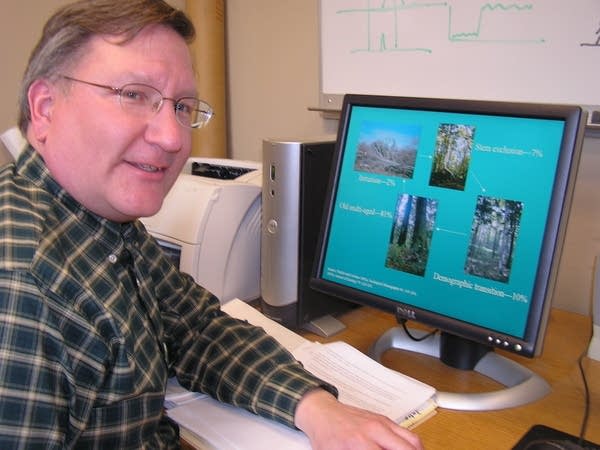U of M plans environmental research institute

(AP) - The University of Minnesota plans to create an Institute on the Environment to conduct applied research on major environmental problems and coordinate all of the university's environmental work.
The proposal, which was unveiled Friday at public meetings in Duluth and the Twin Cities, was first put forward by University President Robert Bruininks.

The institute will be located on the Minneapolis campus, but will be a virtual roof over all environmental research across the system, said Deb Swackhamer, environmental health professor and researcher who is co-chairwoman of the new institute's advisory council.
The institute, expected to open in 2007, will have a director, support staff and about 30 endowed chairs from various sciences, Swackhamer said.
Create a More Connected Minnesota
MPR News is your trusted resource for the news you need. With your support, MPR News brings accessible, courageous journalism and authentic conversation to everyone - free of paywalls and barriers. Your gift makes a difference.
"We want to have our best researchers involved, but also bring in stakeholders from outside the university and experts across other disciplines, to solve global environmental problems that are getting increasingly more complicated," Swackhamer said.
"We want to take issues like climate change and tackle what they're going to mean to Minnesota wetlands, for example, and what the global implications are affecting Minnesota."
These are researchers doing great work now, but not necessarily talking to each other.
Supporters hope even greater discoveries can be made by bringing together what have been disparate researchers, fields and projects, Swackhamer said.
The institute also will act as a clearinghouse for existing environmental work done by the various schools and research facilities within the university system, including the Natural Resources Research Institute, Large Lakes Observatory and Minnesota Sea Grant in Duluth.
"We have some of the world's best researchers and some of the most important environmental work being done across the system. But the sum of all the parts aren't as great as they could be," Swackhamer said.
It also will provide a place where people inside and outside the university can instantly access the full range of environmental research being done.
"We're envisioning a place where people who do all kinds of research, from economic to environmental to engineering, can come together to solve big problems," said Lucinda Johnson, an NRRI researcher who serves on the advisory council. "These are people doing great work now but not necessarily talking to each other."

How the institute will be funded and its budget haven't been determined, Swackhamer said. However, it will be part of the university's request to the 2007 Minnesota Legislature.
The advisory council is taking public comments and will adjust the plan before presenting it to the provost and Board of Regents in coming weeks.
The plan is to include input from several colleges within the university system, not just environmental sciences, said Jerry Niemi, director of the NRRI's Center for Water and the Environment.
"I'm very excited about this proposal because it confirms the university takes the environment seriously, that it's making it a top priority -- which is something we've been doing here for the past 20 years," Niemi said.
"It's also very exciting because it's going to bring people in to solve problems who aren't just doing research, but social scientists and political scientists and economists," Niemi said. "This is the direction we have to go if we are going to truly solve our most pressing environmental issues."
(Copyright 2006 by The Associated Press. All Rights Reserved.)
